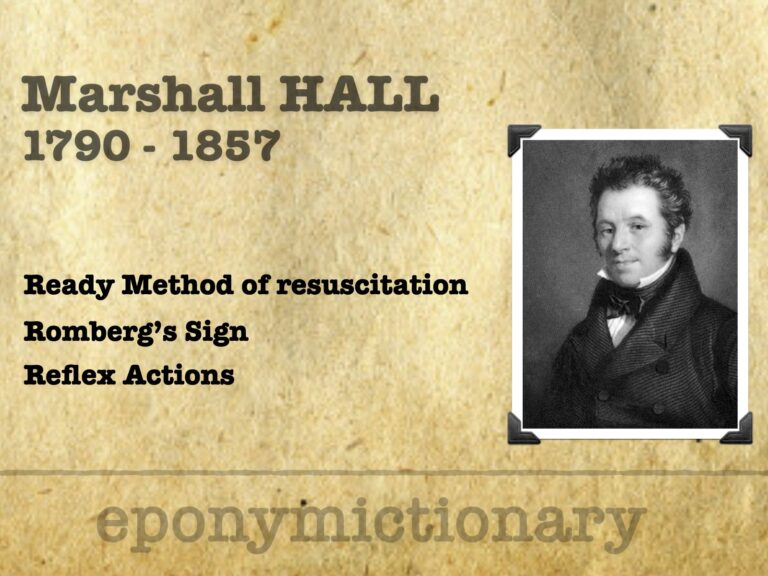
Marshall Hall
Marshall Hall (1790–1857): Pioneer of reflex physiology, anti-bloodletting reformer, creator of the Ready Method for resuscitation, and advocate for animal ethics.

Marshall Hall (1790–1857): Pioneer of reflex physiology, anti-bloodletting reformer, creator of the Ready Method for resuscitation, and advocate for animal ethics.
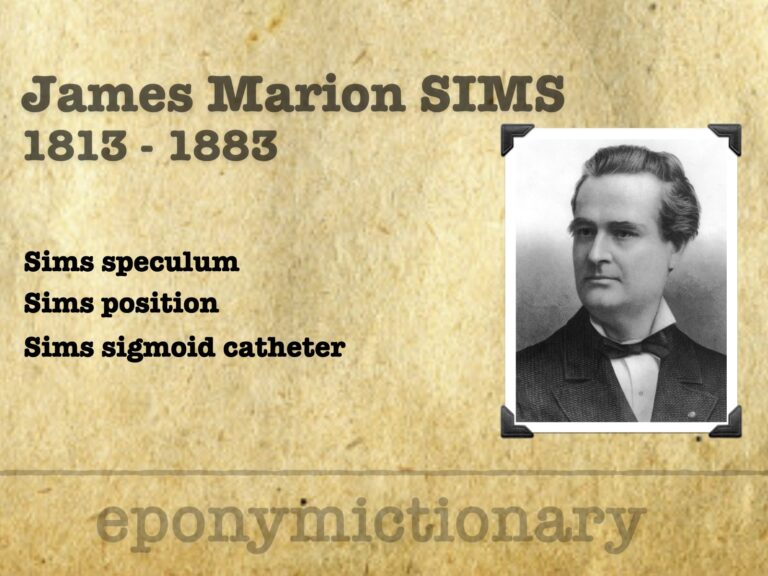
American gynecologist James Marion Sims (1813-1883) pioneered vesicovaginal fistula surgery but remains controversial for non-consensual experiments on enslaved women.

Emanuel Libman (1872–1946), American internist who co-described Libman-Sacks endocarditis and revolutionised diagnostic medicine at Mount Sinai.

François Dessertenne (1917–2001), French cardiologist who coined torsades de pointes in 1966, advanced ECG-based arrhythmia diagnosis with lasting impact.
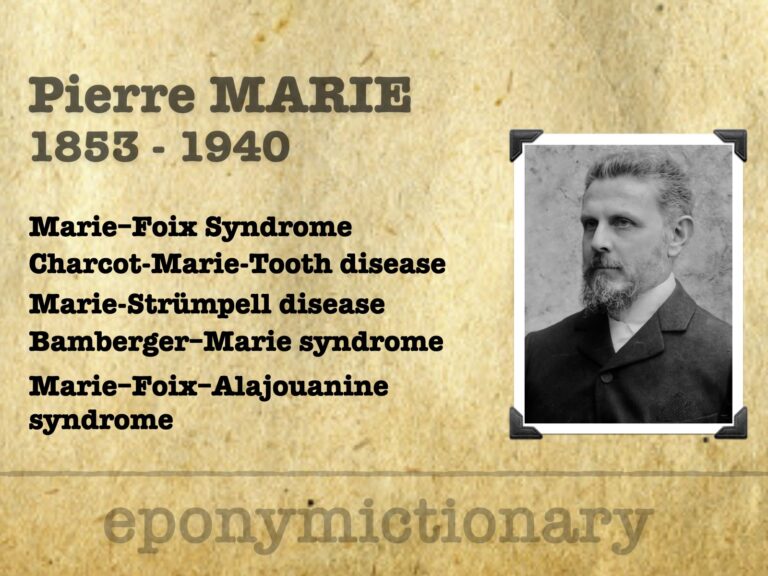
Pierre Marie (1853–1940), French neurologist and endocrinologist; defined acromegaly, described progressive aphasia, and helped shape modern neurology.

Jean-Alexandre Barré (1880–1967). French neurologist ; co-described Guillain–Barré syndrome; pioneer in vestibular neurology and semiology; eponyms include Barré test and Barré–Liéou syndrome.
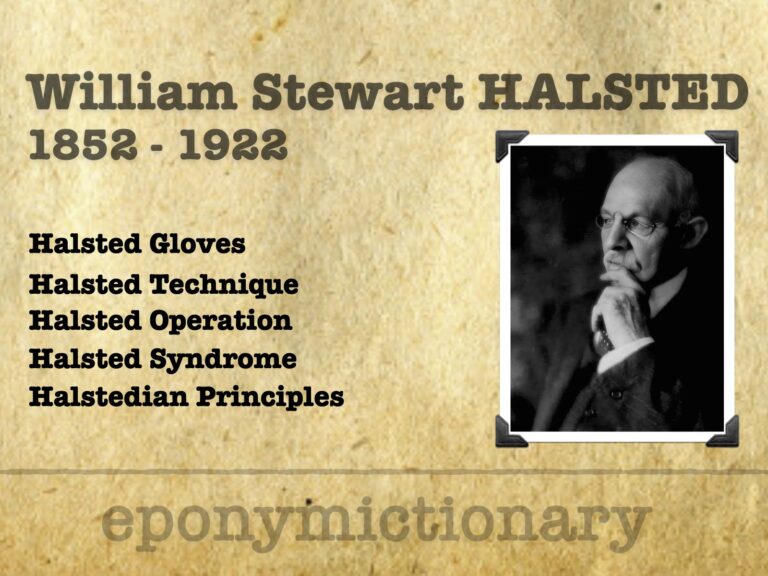
William Halsted (1852–1922), pioneering American surgeon, revolutionized surgery with aseptic technique, anesthesia, gloves, and the residency training model.

Joe Vincent Meigs (1892-1963) American gynaecologic oncology. Meigs syndrome, radical hysterectomy innovations and validation of Pap smear screening.
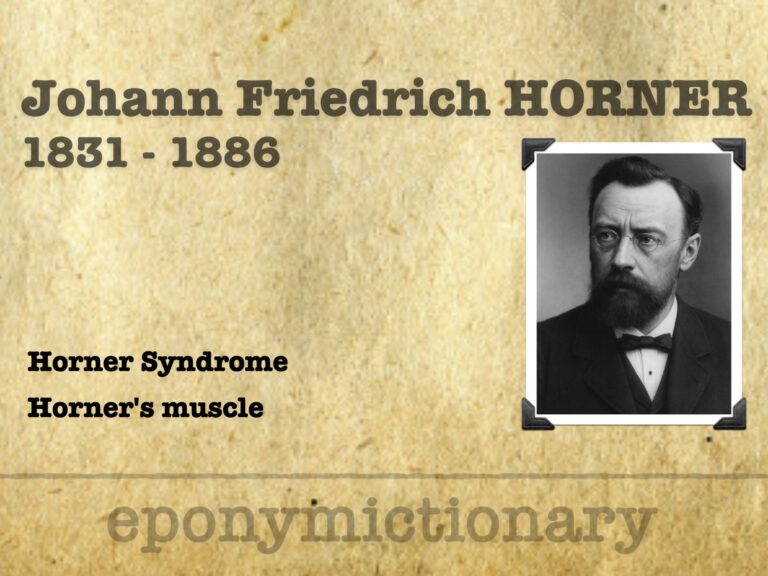
Swiss ophthalmologist Johann Friedrich Horner (1831–1886), eponym of Horner's syndrome, advanced ophthalmic surgery and neuroanatomical diagnostics
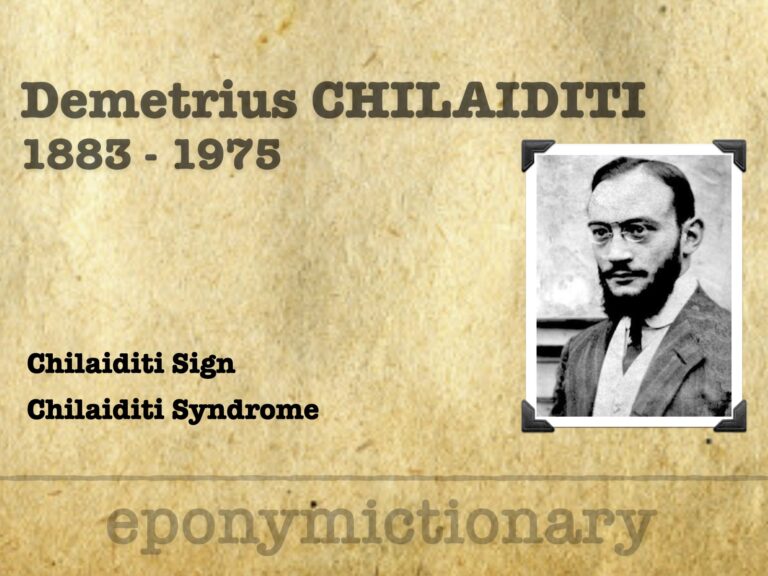
Demetrius Chilaiditi (1883–1975) Austrian born radiologist. Described Chilaiditi sign (1910); details of his life remain largely undocumented.
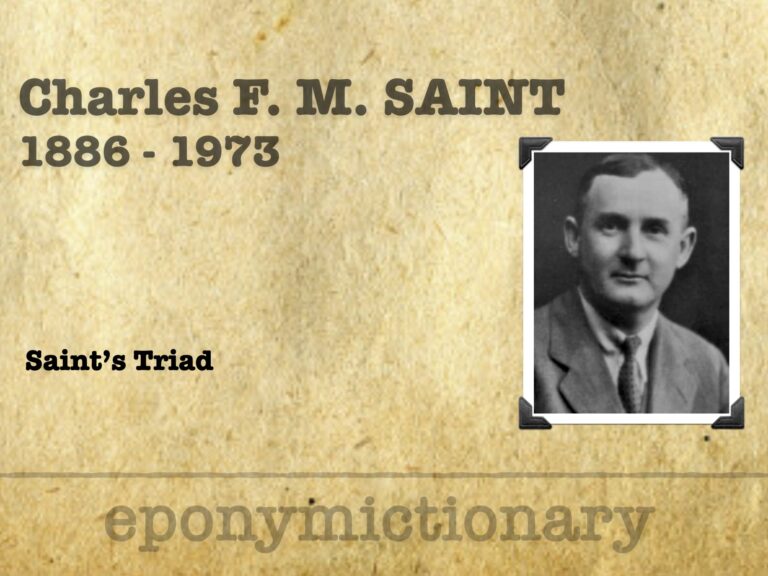
Charles FM Saint (1886–1973), pioneer of South African surgery, identified Saint’s triad and shaped generations through surgical teaching and aphorisms.
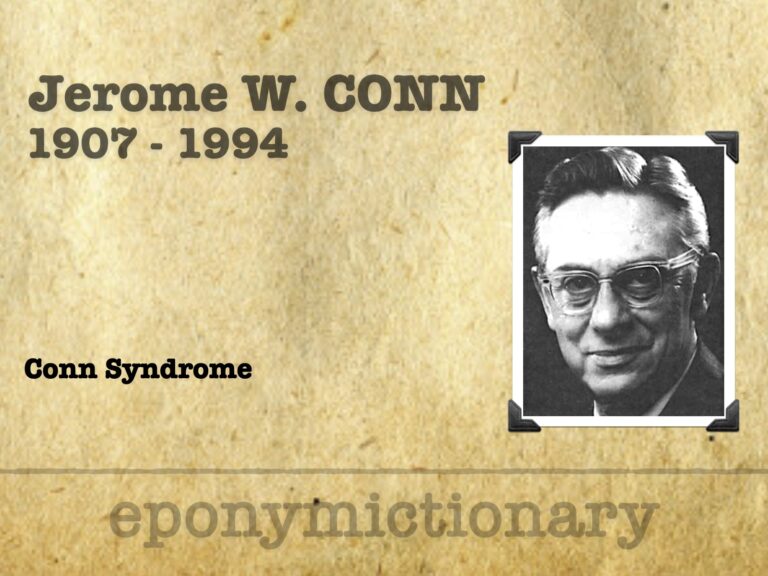
Jerome W. Conn (1907–1994) American endocrinologist. Described Conn syndrome (primary aldosteronism), transforming the diagnosis of hypertension.